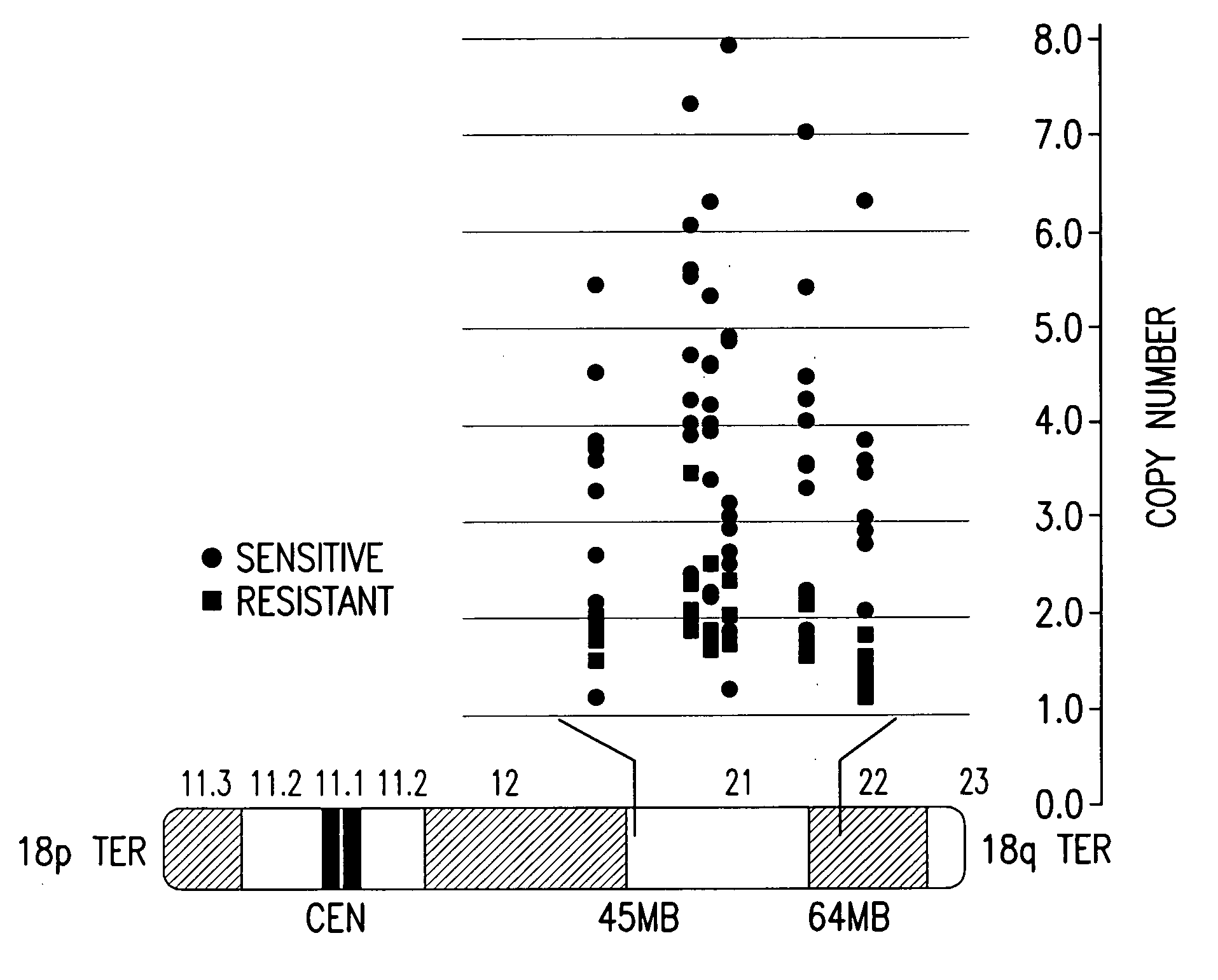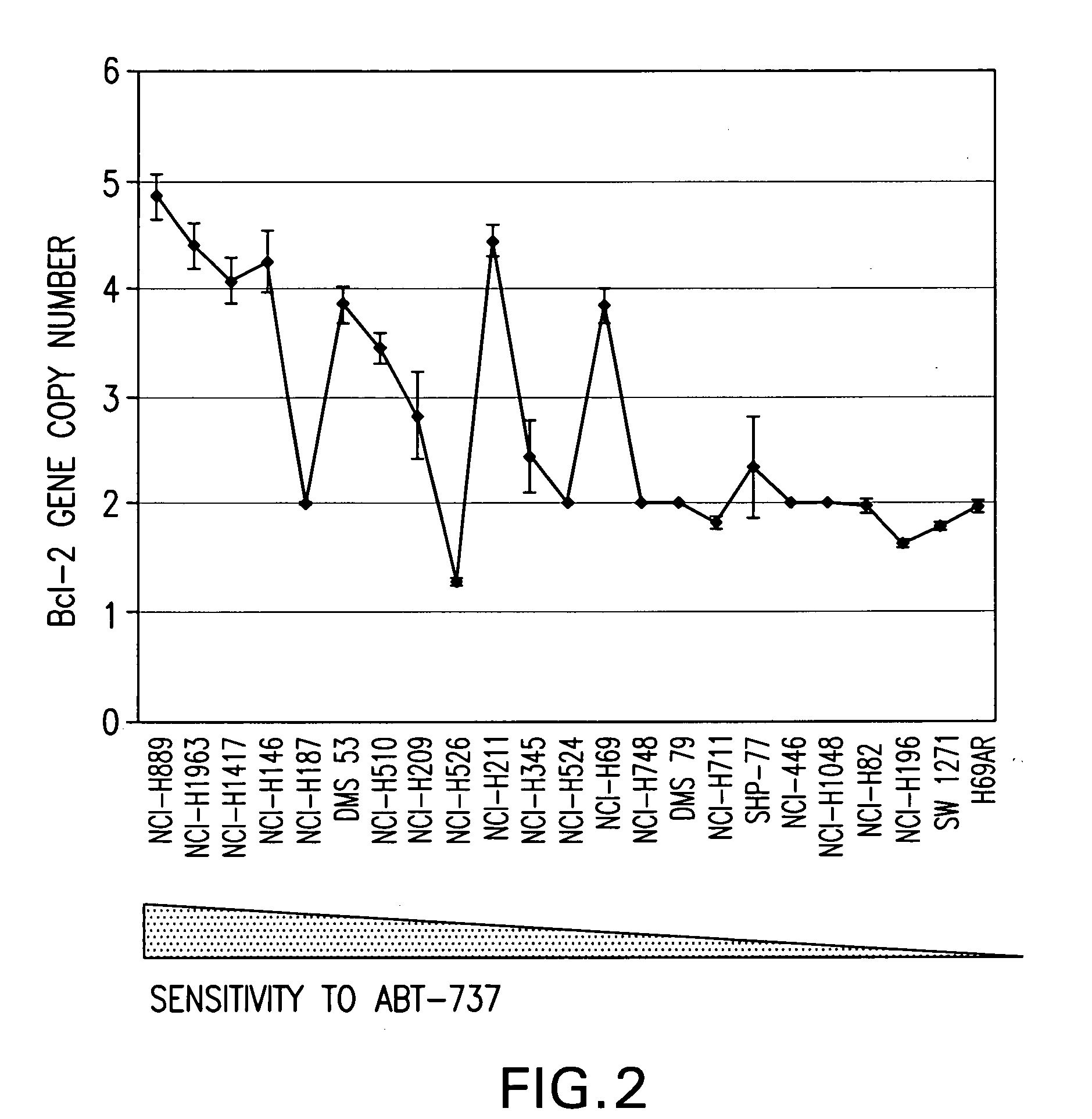Companion diagnostic assays for cancer therapy
a cancer therapy and assay technology, applied in combinational chemistry, biochemistry apparatus and processes, library screening, etc., can solve the problems of low survival rate for this subtype, unsatisfactory improvement, and approximately 160,000 deaths, and achieve the effect of improving the stratification of patients and particular utility
- Summary
- Abstract
- Description
- Claims
- Application Information
AI Technical Summary
Benefits of technology
Problems solved by technology
Method used
Image
Examples
Embodiment Construction
[0017]I. General
[0018]The invention is based on the discovery by Applicants of chromosome copy number changes in small cell lung cancer cell lines that correlate to therapy sensitivity. In particular, Applicants correlated chromosome copy number gain at 18q21-q22 to sensitivity to a Bcl-2 family inhibitor. The Bcl-2 gene in this locus is a key regulator of cell survival, and other genes in this locus such as NOXA also impact cell survival. Chromosomal gain at 18q21-q22 can thus mark sensitivity to other cancer therapy, such as other chemotherapy or radiation therapy.
[0019]As used herein, a “Bcl-2 family inhibitor” refers to a therapeutic compound of any type, including small molecule-, antibody-, antisense-, small interfering RNA-, or microRNA-based compounds, that binds to at least one of Bcl-2, Bcl-XL, and Bcl-w, and antagonizes the activity of the Bcl-2 family related nucleic acid or protein. The inventive methods are useful with any known or hereafter developed Bcl-2 family inhi...
PUM
| Property | Measurement | Unit |
|---|---|---|
| volume | aaaaa | aaaaa |
| temperature | aaaaa | aaaaa |
| nucleic acid | aaaaa | aaaaa |
Abstract
Description
Claims
Application Information
 Login to View More
Login to View More - R&D
- Intellectual Property
- Life Sciences
- Materials
- Tech Scout
- Unparalleled Data Quality
- Higher Quality Content
- 60% Fewer Hallucinations
Browse by: Latest US Patents, China's latest patents, Technical Efficacy Thesaurus, Application Domain, Technology Topic, Popular Technical Reports.
© 2025 PatSnap. All rights reserved.Legal|Privacy policy|Modern Slavery Act Transparency Statement|Sitemap|About US| Contact US: help@patsnap.com



